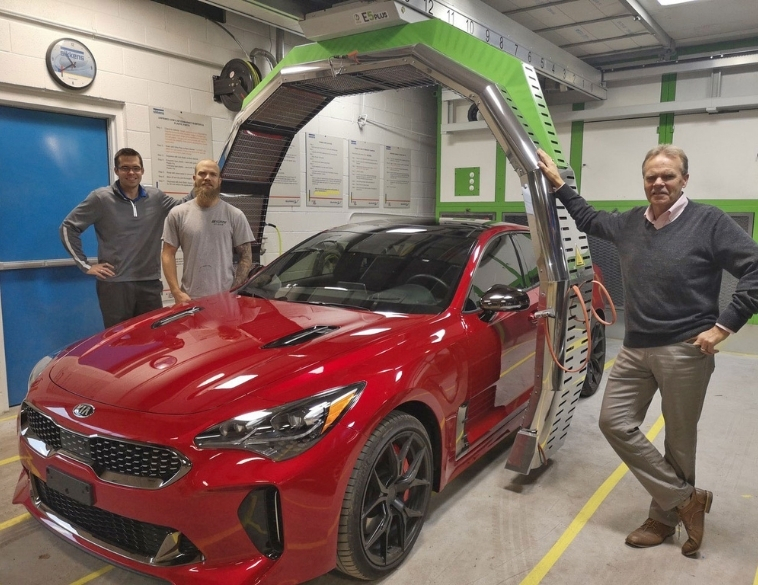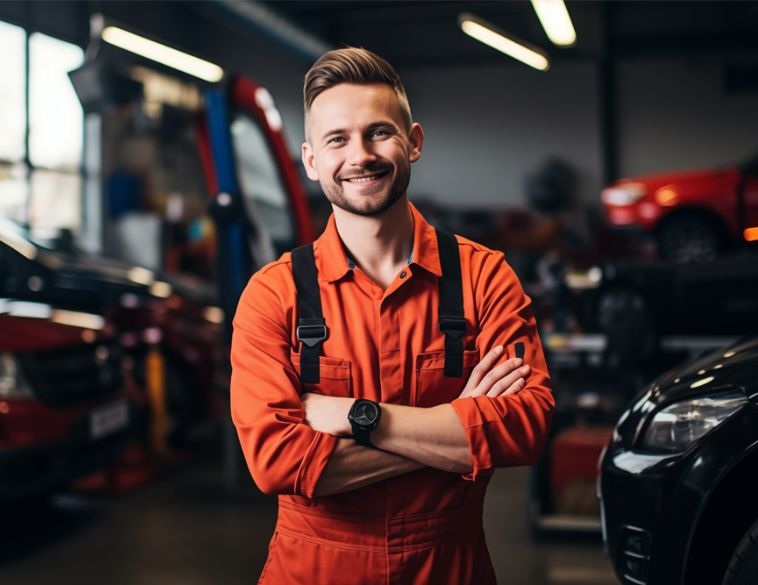Robotic drying technology is proving a huge game-changer for collision repairers that can really leverage its potential.
Efficiency is a key driver within the collision shop environment. The faster a vehicle is able to transition through each stage of the repair process; the more repairs can be completed and the more potential profit a shop can earn.
For decades, one of the biggest bottlenecks for repair efficiency concerned refinishing and particularly the drying stage. Waiting for the finish to cure before re-assembly could add hours if not days to a job.
Significant difference
Today, technologies such as robotic drying have been able to shave significant time off the curing process—yet procuring robotic drying equipment and utilizing it effectively requires some careful considerations.
According to Colin Bellavance, General Manager, CSN St. Clair, in Sarnia, Ont., a collision shop needs to factor human resources when it comes to equipment such as robotic drying technology.
Because waiting for paint to dry becomes a thing of the past, he says it’s important to have technicians available to assist in vehicle re-assembly following the drying process or perform small repairs.
Otherwise, overproduction in the refinish department can mean vehicles are stockpiled since there aren’t enough hands available to perform re-assembly, which essentially just moves the bottleneck further down the line.
Les Pawlowski, General Manager for Symach in Canada, notes that in order to determine how robotic drying equipment will actually improve productivity within the shop, understanding exactly what type of equipment is needed and working with the vendor to analyze the shop’s productivity data is essential to making it work.
Two in one
When it does, the results can be dramatic.
Symach’s Spraytron with EasyDry robot, for example, functions as two paint booths in one.
“It combines the fast-drying speed of wet on the wet sealer, waterborne basecoat and clearcoat,” says Pawlowski. He explains, that the “Spraytron produces daily, the equivalent of at least two conventional downdraft paint booths but in half the space.”
Additionally, he says that Symach’s FlyDry robot in a single prep-station (Basetron) is sufficient to prime up 16-18 cars per day. Those are some serious numbers.
Further technology advances can be seen in products such as Symach’s FlyDry Hybrid robot equipped with Drytronic Catalytic IR drying for 2K products and the new Ultraviolet LEDtronic for UV curable coatings.
“Today it is possible to UV Prime the complete side of a vehicle, even a Sprinter van; and dry it in 2-3 minutes,” says Pawlowski. He also notes that the robotic application of both IR and UV drying in one device represents a first for the collision repair industry.
“Whether prepping/painting parts of the car or mounted on the vehicle, the speed and size of fast repairs are now limitless,” he explains. Symach has also developed a dedicated FlyDry UV Robot designed for drying all types of UV finishes.
Hybrids and EVs
Additionally, with collision centres often finding themselves repairing growing numbers of hybrids and battery electric vehicles, there are some important considerations when it comes to using drying equipment.
Les Pawlowski notes that Symach’s Drytronic technology is particularly effective for curing EVs.
“Symach’s Drytronic infrared drying technology focuses energy to the painted surface and will not raise interior or under-car/underhood temperatures,” he explains.
This means that it avoids concentrating any excess heat on an EV’s battery pack and electronics.
“Several OEMs have issued position statements concerning heat limits on their electrical systems during the baking process,” says Pawlowski.
“With Symach’s Drytronic technology, you get faster drying than conventional baking without slowing the paint/dry process. In fact, it’s more than twice as fast!”
While technology like this can prove hugely beneficial—significantly reducing overall cycle time and allowing technicians to handle the vehicle and parts faster in the post refinish stage.
As Colin Bellavance explains, the shop not only needs to consider budgets and staffing when it comes to acquiring robotic drying equipment, but also the volume of work required to support the implementation of technology like this.
“Drying equipment can be a sizeable investment,” he says. “If you have the work, the human resources, the talent, and the organizational skills to keep a nice flow of work pulling through your shop, then drying equipment makes sense.”
Just How Beneficial?
Sometimes it can be difficult to fully gauge the impact a new technology or process can have on repair efficiency.
At CSN St. Clair, the installation of two Greentech drying robots, including one located at the prep station has been a major game-changer.
Colin Bellavance says the speed at which primer can now be cured has proved hugely beneficial for the shop. “Traditionally, minimum dry time was 40 minutes for primer,” he says.
“Now, we can be sanding primer as soon as 10 minutes.” As a result, it takes considerably less time to get vehicles ready for the spray booth.
Bellavance explains that because both primer and paint can be cured much faster, the result is also better cycle time on small repairs, which allows for better scheduling and shorter lead times.
“Ultimately, there are benefits throughout the entire process, from cycle time to efficiency, and quality.
“The pace of claims handling continues to speed up, so it’s important to be able to keep the pace. Customer service is always a priority and being able to provide quality safe repairs with efficient service is a huge advantage.”



